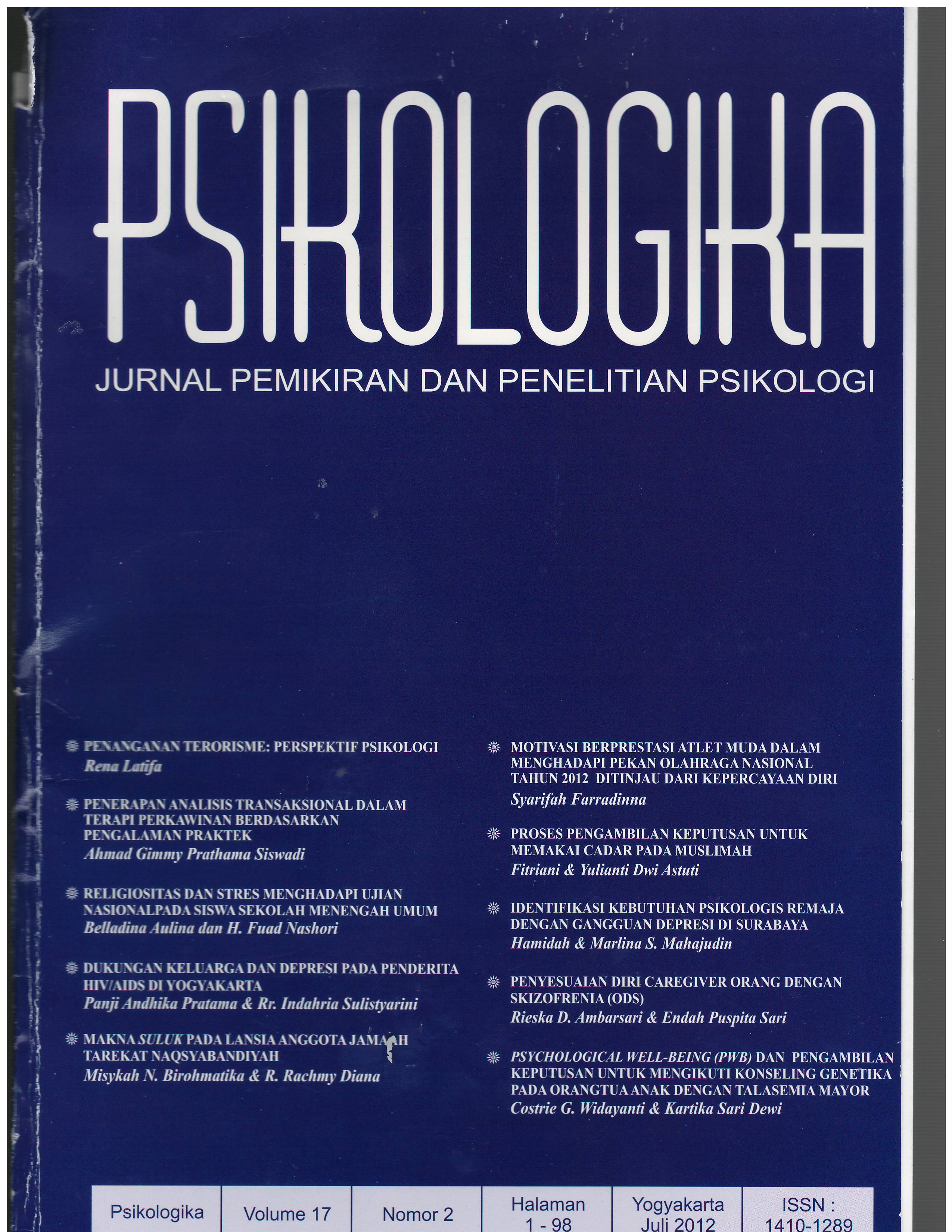Main Article Content
Abstract
This study aims to find out and understanding the decision making process on moslem women wearing the face veil (niqaab) and the factors influences moslem women wearing the face veil. The theory used in this study based on the decision making process theory which proposed by Gitosudarmo and Sudita (1997). Total respondents in this study are two moslem women in the aged of 20 to 25 years old, unmarried, wearing the face veil for at least one year, and the first time using the face veil is when still registered as an active student at a particular university in Yogyakarta. The data collection methods used in this study were interviews using an interview guide during the interview process. This study found that the two respondents had been going through the decision making process that similar to the theory propounded by Gitosudarmo and Sudita (1997) which includes setting the goals, identifying problems, developing various solutions alternative, evaluation on various solutions alternative that have been developed and choose an alternative that has been evaluated, implementing the decisions, evaluation upon the implemented decision, monitoring and perform corrective action. Despite all two respondents had known the consequences (risk) that will be encountered, both respondents continue to implement the decision because of the higher achievement or expectations, i.e. preserve their modesty, minimizing the possibility of individuals to cause other people immoral behavior, wanted to became a better person, expect Allah's blessings and to be put in paradise with variety of pleasures in it and so on. Sometimes, the decision was also implemented to avoid something worse that might happen later in the future which is severe consequences (risk) in the hereafter (aakhirah).
Keywords: decision making process, face veil (niqaab)
Article Details
Authors who publish with this journal agree to the following terms:
- Authors retain copyright and grant the journal right of first publication with the work simultaneously licensed under a Creative Commons Attribution-ShareAlike 4.0 International License that allows others to share the work with an acknowledgment of the work's authorship and initial publication in this journal.
- Authors are able to enter into separate, additional contractual arrangements for the non-exclusive distribution of the journal's published version of the work (e.g., post it to an institutional repository or publish it in a book), with an acknowledgment of its initial publication in this journal.
- Authors are permitted and encouraged to post their work online (e.g., in institutional repositories or on their website) prior to and during the submission process, as it can lead to productive exchanges, as well as earlier and greater citation of published work (See The Effect of Open Access).




